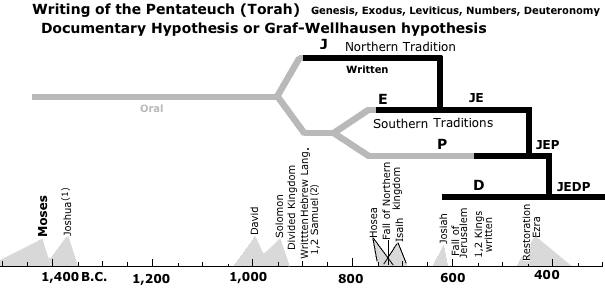By the late nineteenth century, there was a general consensus among biblical scholars that the “Five Books of Moses” (the primary books of the Hebrew Bible/Old
Testament) actually contained four
distinct authorial
voices — a theory that is known as the Documentary Hypothesis.
This consensus began to erode in the late 1970s and contemporary
scholars argue for a wide variety of theories, though variations of the
Documentary Hypothesis are still popular and continue to inform
contemporary debates on the origins of the Torah. The four authorial
voices, as
developed in the original theory, are:
- Refers to God as
YHWH (Yahweh/Jehovah).
- Presents God as an anthropomorphic
(i.e. human-like) figure, who walks in the Garden of Eden (Gen. 3:8),
shares a meal with Abraham (Gen. 18), wrestles with — but does not defeat — Jacob (Gen. 32:22), and can even be dissuaded from pursuing a course of action, as when Abraham bargains with God over the fate of Sodom and Gomorrah (Gen. 18: 16-33) or when Moses convinces God not to destroy the people of Israel after they worship the golden calf (Exodus 32:9-14).
- Prior to division of
Israel
into two kingdoms in 922 BCE (see map below), but emphasizing southern localities and the role of
Abraham as the patriarch of the tradition.
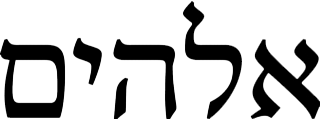
- Refers to God as Elohim (until God reveals his name to Moses in Exodus 3, after which Yahweh is used).
- More awesome
and remote (as in the phrase “fear of God”),
though still anthropomorphic. For example, Moses is
the only figure who has any direct communication with God, and even
here it is less direct than the examples listed above for the Yahwist.
Instead, God appears in the form of a cloud (by day)/flame (by night), or in dreams and
visions, or by a messenger — but always at a distance.
- Focuses on the northern traditions of the Kingdom of Israel (as opposed to the southern Kingdom of Judah).
- Refers
to Mount Sinai as Mount Horeb (which may have been a different name for
the same mountain or a different mountain in the north).
- One scholar summarizes the Elohist perspective as follows: “Israel
must fear God and be obedient. That obedience must be shaped by the
covenant. God is present to his people, but at a distance and in a
veiled way, because he is so terrifying.” (Elohist)
- Although
Yahweh was previously worshiped at many sites, Deuteronomy 12:13
restricts worship to one
location: the temple that King Solomon will ultimately build (or, perhaps, has already built) in Jerusalem.
- The narrative
is presented as the recollections of Moses, but they begin only from the
Ten Commandments and focus on the laws by which the Israelites are
to live once they reach the Promised Land.
- Theology of national morality:
Israel is conceived of as a theocracy in which the Jewish people will be collectively
rewarded and/or punished according to their collective conduct. For example, when the people
fail to refrain from sin, the northern Kingdom of Israel is conquered
by the Assyrians in 721 BCE and the southern Kingdom of Judah is conquered by the Babylonians in 586 BCE.
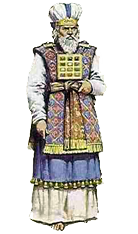
- Concerned with ritual in
general and the promotion of Moses’ brother Aaron (as opposed to the Zadokite priests who were previously dominant at the Temple in Jerusalem) as the
progenitor of the legitimate line of the priesthood.
- Treats God as transcendental and distant — justifying the need for a priesthood to act as intermediary between God and the people.
- Written during the Babylonian exile:
provides detailed
descriptions of the temple (implying post-temple period), yet
incorporates
older material as well.
- Details of temple worship are associated with
Moses (c. 13th-12th centuries BCE), even though the first temple wasn’t built until the
reign of Solomon (961-931 BCE).
|
- What are the implications of
adopting this perspective on the bible?
- What are the implications of rejecting
the evidence of multi-authorship?
- Do sacred texts lose their "sacredness" when subjected to this type of modern analysis?
Genesis
A Tale of Two Creations?
|
Genesis 1:1-2:3
The Priestly Source
1 In the beginning God created the heavens and the earth. 2 Now
the earth was formless and empty, darkness was over the surface of the
deep, and the Spirit of God was hovering over the waters.
3 And God said, “Let there be light,” and there was light. 4 God saw that the light was good, and he separated the light from the darkness. 5 God
called the light “day,” and the darkness he called “night.” And there
was evening, and there was morning — the first day. ...

6 And God said, “Let there be a vault between the waters to separate water from water.” 7 So God made the vault and separated the water under the vault from the water above it. And it was so. 8 God called the vault “sky.” And there was evening, and there was morning — the second day.
9 And God said, “Let the water under the sky be gathered to one place, and let dry ground appear.” And it was so. 10 God called the dry ground “land,” and the gathered waters he called “seas.” And God saw that it was good.
11 Then
God said, “Let the land produce vegetation: seed-bearing plants and
trees on the land that bear fruit with seed in it, according to their
various kinds.” And it was so. 12 The
land produced vegetation: plants bearing seed according to their kinds
and trees bearing fruit with seed in it according to their kinds. And
God saw that it was good. 13 And there was evening, and there was morning — the third day.
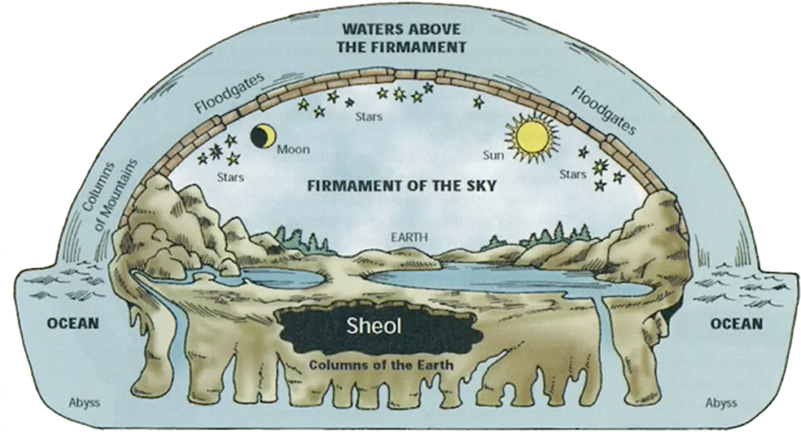
14 And
God said, “Let there be lights in the vault of the sky to separate the
day from the night, and let them serve as signs to mark sacred times,
and days and years, 15 and let them be lights in the vault of the sky to give light on the earth.” And it was so. 16 God
made two great lights — the greater light to govern the day and the
lesser light to govern the night. He also made the stars. 17 God set them in the vault of the sky to give light on the earth, 18 to govern the day and the night, and to separate light from darkness. And God saw that it was good. 19 And there was evening, and there was morning — the fourth day.
20 And God said, “Let the water teem with living creatures,
and let birds fly above the earth across the vault of the sky.” 21 So
God created the great creatures of the sea and every living thing with
which the water teems and that moves about in it, according to their
kinds, and every winged bird according to its kind. And God saw that it
was good. 22 God
blessed them and said, “Be fruitful and increase in number and fill the
water in the seas, and let the birds increase on the earth.” 23 And there was evening, and there was morning — the fifth day.
24 And
God said, “Let the land produce living creatures according to their
kinds: the livestock, the creatures that move along the ground, and the
wild animals, each according to its kind.” And it was so. 25 God made the wild animals
according to their kinds, the livestock according to their kinds, and
all the creatures that move along the ground according to their kinds. And God saw that it was good.
26 Then
God said, “Let us make mankind in our image, in our likeness, so that
they may rule over the fish in the sea and the birds in the sky, over
the livestock and all the wild animals, and over all the creatures that move along the ground.” 27 So God created mankind in his own image,
in the image of God he created them;
male and female he created them. 28 God
blessed them and said to them, “Be fruitful and increase in number;
fill the earth and subdue it. Rule over the fish in the sea and the
birds in the sky and over every living creature that moves on the
ground.” ... 31 God saw all that he had made, and it was very good. And there was evening, and there was morning — the sixth day. (NIV: Genesis 1:1-31)
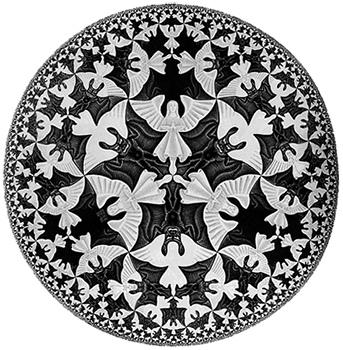
- According to this account, does God create the world ex nihilo (out of nothing)?
- The
text seems to imply that God created the heavens and the earth from a
pre-existing mass of water, with the heavens created on Day 2 and the
earth on Day 3; the theory of creatio ex nihilo did not develop until the second and third centuries CE.
- Why does God say "Let us make mankind in our image, in our likeness"? Does this assume that God has a humanlike body? Does it assume the existence of other gods?
- It is worth noting that in this account of creation God is referred to as Elohim, which is the plural of eloah (“a god”) and which seems to have originally referred to “the family or pantheon associated with the Canaanite father god El.” (en.wikipedia.org/wiki/Elohim)
- Does this account suggest that man and
woman were created separately or at the same time?
|

Genesis 2:4-2:24
The Yahwist
4 This is the account of the heavens and the earth when they were created, when the Lord God made the earth and the heavens. 5 Now no shrub had yet appeared on the earth and no plant had yet sprung up, for the Lord God had not sent rain on the earth and there was no one to work the ground, 6 but streams came up from the earth and watered the whole surface of the ground. 7 Then the Lord God formed a man from the dust of the ground and breathed into his nostrils the breath of life, and the man became a living being. 8 Now the Lord God had planted a garden in the east, in Eden; and there he put the man he had formed. 9 The Lord
God made all kinds of trees grow out of the ground — trees that were
pleasing to the eye and good for food. In the middle of the garden were
the tree of life and the tree of the knowledge of good and evil. ... 18 The Lord God said, “It is not good for the man to be alone. I will make a helper suitable for him.” 19 Now the Lord God had formed out of the ground all the wild animals and all the birds in the sky. ... But for Adam no suitable helper was found. 21 So the Lord God caused the man to fall into a deep sleep; and while he was sleeping, he took one of the man’s ribs and then closed up the place with flesh. 22 Then the Lord God made a woman from the rib he had taken out of the man, and he brought her to the man. 23 The man said, “This is now bone of my bones
and flesh of my flesh;
she shall be called ‘woman,’
for she was taken out of man.” (NIV: Genesis 2:4-23)
- Pay
close attention to the order in which the various plants and animals of
the world were created. Is it consistent with the first account in
Genesis 1:1-2:3?
- What
about the creation of human beings? Do the two accounts agree or do
they suggest different perspectives on the relationship between men and
women?
- If
these are indeed two distinct creation stories, what does this imply
about the authorship of the torah (the first five books of the bible,
which are traditionally believed to have been written by Moses through
divine inspiration)?
|
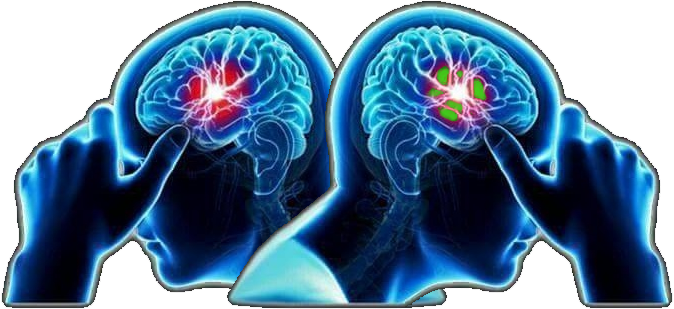 Cognitive Dissonance
Cognitive Dissonance
Cognitive
dissonance is the mental discomfort that one experiences when one
becomes conscious of a blatant contradiction between two or more
beliefs, ideas, or values. For example, the two passages from Genesis
cited above seem to present contradictory perspectives on the
issue of creation, desite the fact that the torah (the first five books of the bible) is traditionally believed to have been transmitted to Moses
directly by God.
One who experiences cognitive dissonance may respond
in various ways:
one can reject one of the contradictory perspectives
one can modify one's conceptual framework so that
the contradiction is either softened or eliminated
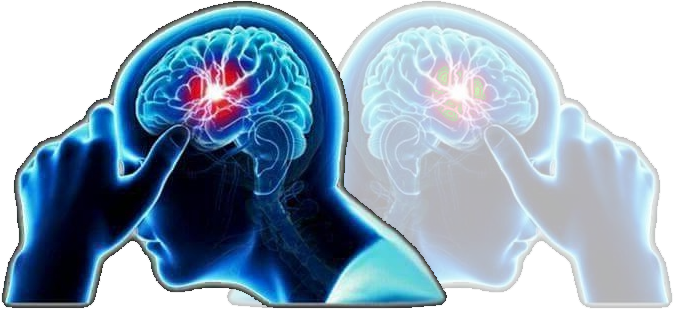
or one can simply ignore the contradiction
|
|

